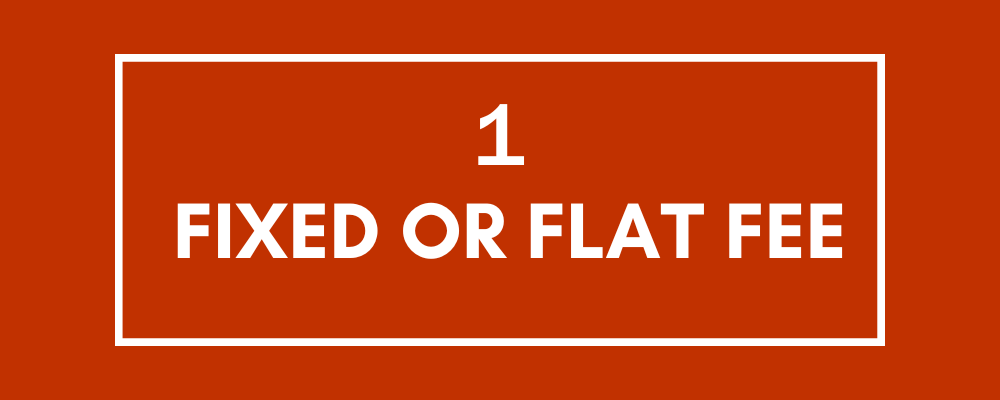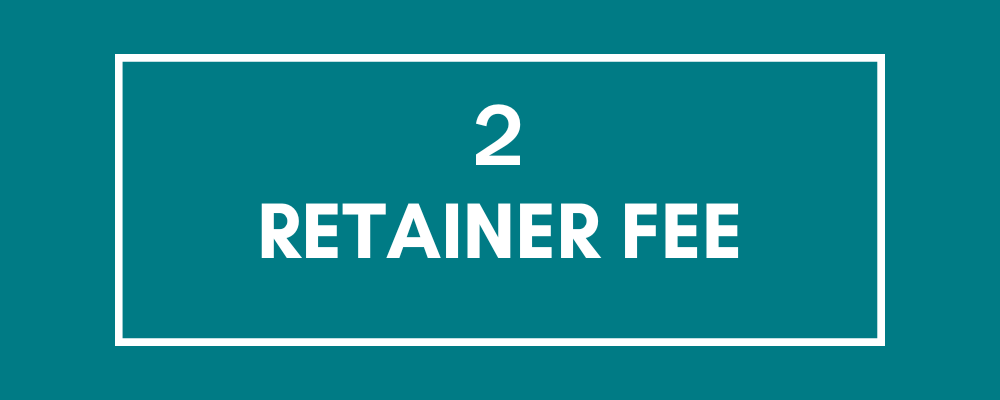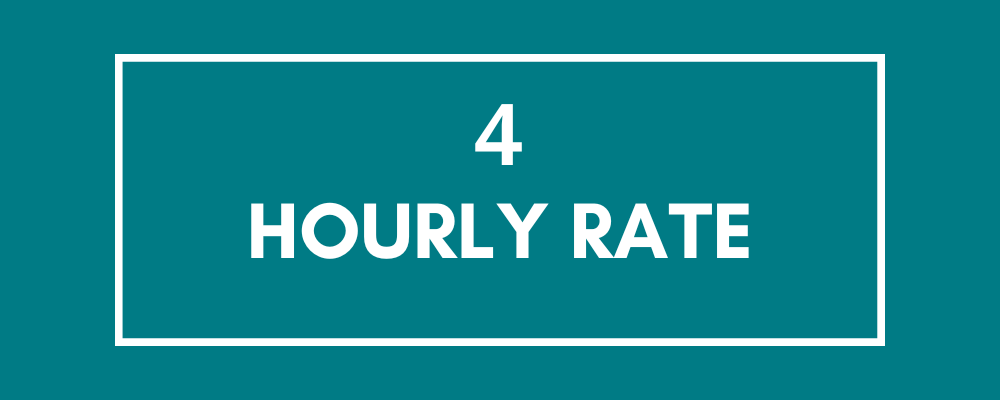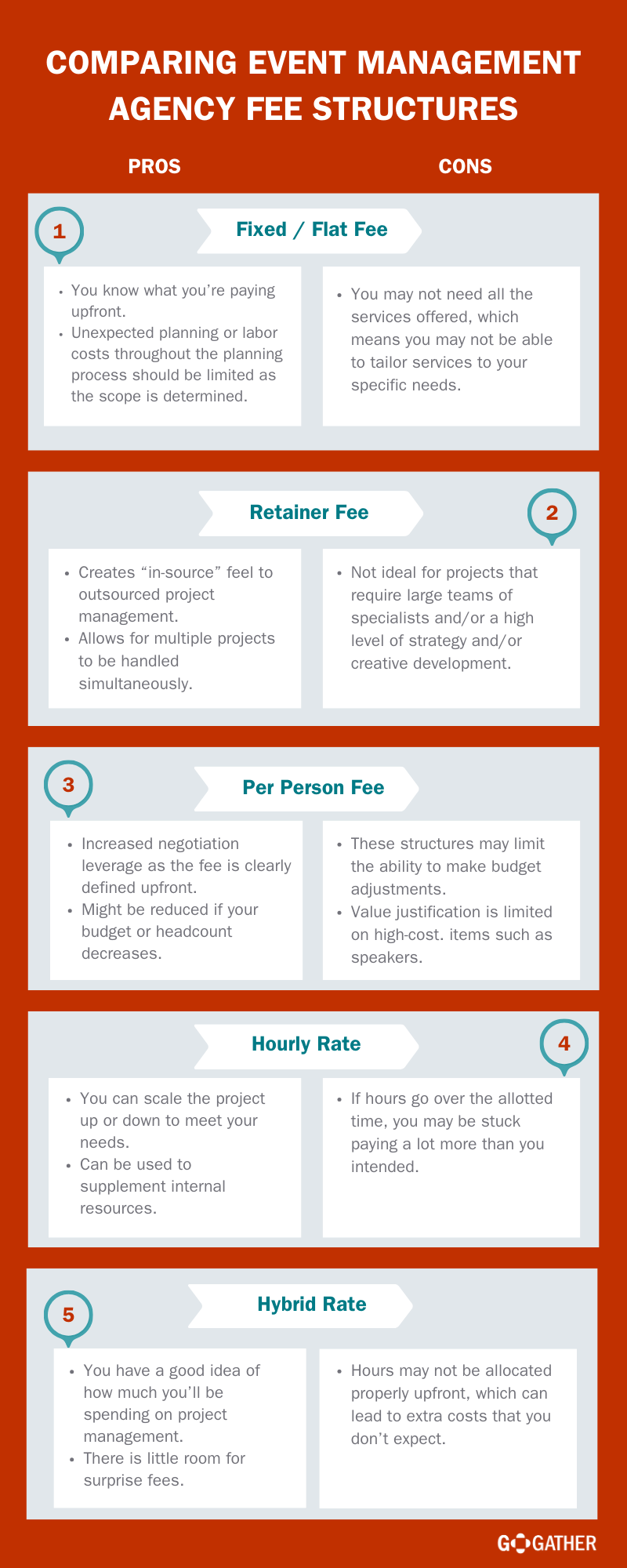Event management agencies are often an excellent resource to help plan your events, but when it comes to the cost conversation, it can often be difficult to determine which approach is right for your company.
With that in mind, we’ve outlined the five most common fee structures you will see in your evaluation of companies and provided guidance on which structures are best for you. Depending on what type of event (or events) you’re looking to host, there may be a best structure for you to work with. Take a look below to read about each structure and determine the right one for your business.
Agency fee structures.
There are five main types of fee structures that you will likely see while evaluating event management agencies. Each has advantages and disadvantages, but certain structures will likely be better suited for your event.
- 🔗 Fixed / flat fee
- 🔗 Retainer fee
- 🔗 Per-person or percentage fee
- 🔗 Hourly rate
- 🔗 Hybrid rate
- 🔗 How to choose the right structure
Below, we break down the five most common fee structures, their pros and cons, and when each one makes the most sense.

1. Fixed / flat fee.
A fixed or flat fee structure is one price you will receive from your event management company. It is typically determined based on the scope of work before the start of the project and will be included as one line item on your budget.
Pros of a fixed / flat fee.
There are several pros to working with a flat fee structure:
- You know what you’re paying upfront
- Unexpected planning or labor costs throughout the planning process should be limited as the scope is determined before the project starts
- Negotiation leverage is increased, as both parties can lengthen their labor forecast and create operational efficiencies
Cons of a fixed / flat fee.
As with any of the structures, there are a few cons of working with a flat fee structure:
- You may not need all the services offered, which means you may not be able to tailor services to your specific needs
- You may not have as much visibility into the specific personnel and hours allocated to your project
- There is potential for changes in fees or additional charges if the scope of work changes
When flat fees are best.
Flat fees typically work best for large one-off or annual projects that are complex and require a high level of skill and experience. This also means that the event management agency is expected to have a high level of autonomy and be the primary driver of the project management process while actively contributing to program design and strategic development.

2. Retainer fee.
A retainer fee is a type of flat fee that is billed on a monthly or quarterly basis. This type of fee is used to spread out costs evenly while providing scalable service for large projects.
Pros of a retainer fee structure.
The pros of a retainer fee structure include:
- Creates “in-source” feel to outsourced project management
- Allows for multiple projects to be handled simultaneously while also offering the development of internal SOPs and Strategic Meetings Management (SMM) development.
- Provides outside expertise and consistent resources that allow internal teams to level periods of high and low activity
Cons of a retainer fee structure.
Retainer services can often be an attractive choice, but there are a few cons:
- Not ideal for projects that require large teams of specialists and/or a high level of strategy and/or creative development
- You will likely need to sign an agreement for a minimum of twelve months
When retainer fees are best.
There are several areas where a retainer fee structure might be best:
- Companies that have multiple events in a year that need full-service help
- i.e. Tradeshow programs, small customer events
- Companies looking to minimize fixed costs of internal headcount with a variable cost of outsourcing
- Companies that want a more standard approach to billing or already have funds budgeted for contract support

3. Per-person or percentage-based fee.
Per-person and percentage-based fees are slightly different but typically come with the same pros and cons. They both are billed based on a percentage of your overall budget or attendee count and can increase or decrease based on your event.
Pros of per-person and percentage-based fees.
Pros of these fee structures include:
- Increased negotiation leverage as the fee is clearly defined upfront
- Might be reduced if your budget or headcount decreases
- You’ll have a good rule of thumb for how much you’ll be spending based on your total budget or headcount
Cons of per-person and percentage-based fees.
We see several cons with this pricing approach, which include:
- These structures may limit the ability to make budget adjustments
- Value justification is limited on high-cost items such as speakers or entertainment that do not require a level of expertise or labor relative to the fee as a percentage of the cost
- For instance, a 10% fee on a $50k speaker doesn’t necessarily make sense given the limited amount of labor required to book that speaker
- You don’t have as much visibility into how many hours are being spent on your event, plus it’s not typically based on hours spent
- There isn’t much incentive for the event management company to save you money
- Because of the nature of this pricing, it’s often where the most hidden costs are found
When per-person and percentage-based fees are best.
Typically, this is a DMC approach to pricing, which you may choose if you prefer to work with local service providers. Ideally, we would only recommend this approach if you know your budget and headcount won’t change; in that scenario, a percentage or per-person fee acts as a flat fee.

4. Hourly rate.
Many companies bill on an hourly basis for events, where every hour dedicated to your project is tracked. Typically hours are agreed upon upfront for the scope of work, and additional hours are approved before being billed (though that’s not always the case).
Pros of an hourly rate.
There are a few pros to working with a purely hourly rate:
- You can scale the project up or down to meet your needs
- We see this approach used most often with companies that have internal teams that cover most of the work internally, but just need an extra set of hands to fill in some of the work
Cons of an hourly rate.
As with any structure, there are a few cons to a purely hourly rate:
- If hours go over the allotted time, you may be stuck paying a lot more than you intended (especially if the company you work with doesn’t tell you before billing the extra hours)
- You may have to bring more work in-house to offset the extra hours
- This is less a project-management approach than a task-based approach
When hourly rates are best.
Although we don’t typically recommend hourly rates to our clients, there are a few instances where this structure is best:
- When you have less complex projects that don’t require many hours (i.e. less than 10 per month for shorter projects)
- When you only need certain services, not full-service management of your event
- When you have internal capabilities but are just in need of a few extra task-based hours

5. Hybrid rate.
A hybrid rate is a mix of a flat fee and an hourly rate. Typically this will provide you with a flat fee based on a certain number of project hours, which you can then choose to increase at an hourly rate.
Pros of a hybrid rate.
Hybrid rates tend to blend the pros of flat fees and hourly rates, making them a good option for certain projects:
- You have a good idea of how much you’ll be spending on project management
- There is little room for surprise fees
- This tends to be more of a partnership approach
- Can scale up if needed, but allows for a lower flat fee to begin (typically)
Cons of a hybrid rate.
The cons of a hybrid rate include:
- Hours may not be allocated properly upfront, which can lead to extra costs that you don’t expect
When hybrid rates are best.
Hybrid rates aren’t necessarily best for every project. If you have smaller or very large/complex projects, we would recommend a fee structure above. However, hybrid rates are excellent when:
- You have a somewhat complex event
- Your budget needs to be carefully allocated upfront
- We often recommend this structure for clients with more straightforward events (e.g. sales kickoff, user group, conference), as it simplifies the majority of project management while still allowing for flexibility in scope
What agency fee structure Is right for your business?
Use the matrix below to understand which fee structure might work best for your business.
|
Full-service |
Point-services |
|
|
Large or highly complex event with large or variable budget (>$500k) |
Flat fee |
Hybrid fee |
|
Medium-sized event (250 - 600) with a sizeable budget ($100k - $500k) |
Hybrid fee |
Hourly rate |
|
Smaller event (less than 300 people) with a smaller budget (under $100k) |
Hourly rate |
Hourly rate |
In most cases, we don’t recommend working with a percentage-based fee, as costs can quickly increase if your budget or headcount increases. It also does not incentivize your event management partner to help you save costs. However, if you’re looking to work with a local company such as a DMC, this is likely the fee structure you will face.
When looking to compare companies, make sure you clearly understand the fee structure they are offering and the implications that come with each type of structure. By understanding how your event might affect the cost of working with an event management agency, you can more effectively choose one that fits your needs.
Event management agency fees infographic comparison.

Need help creating a conference experience that’s actually worth attending?
These teams specialize in that — read 15 Best Conference Event Management Companies.
Ready to plan your next event?
At GoGather, we focus on collaboration and transparency to make sure your event feels like a true partnership. We shape each experience around your goals and keep you in the loop from start to finish. Ready to plan something great together?





